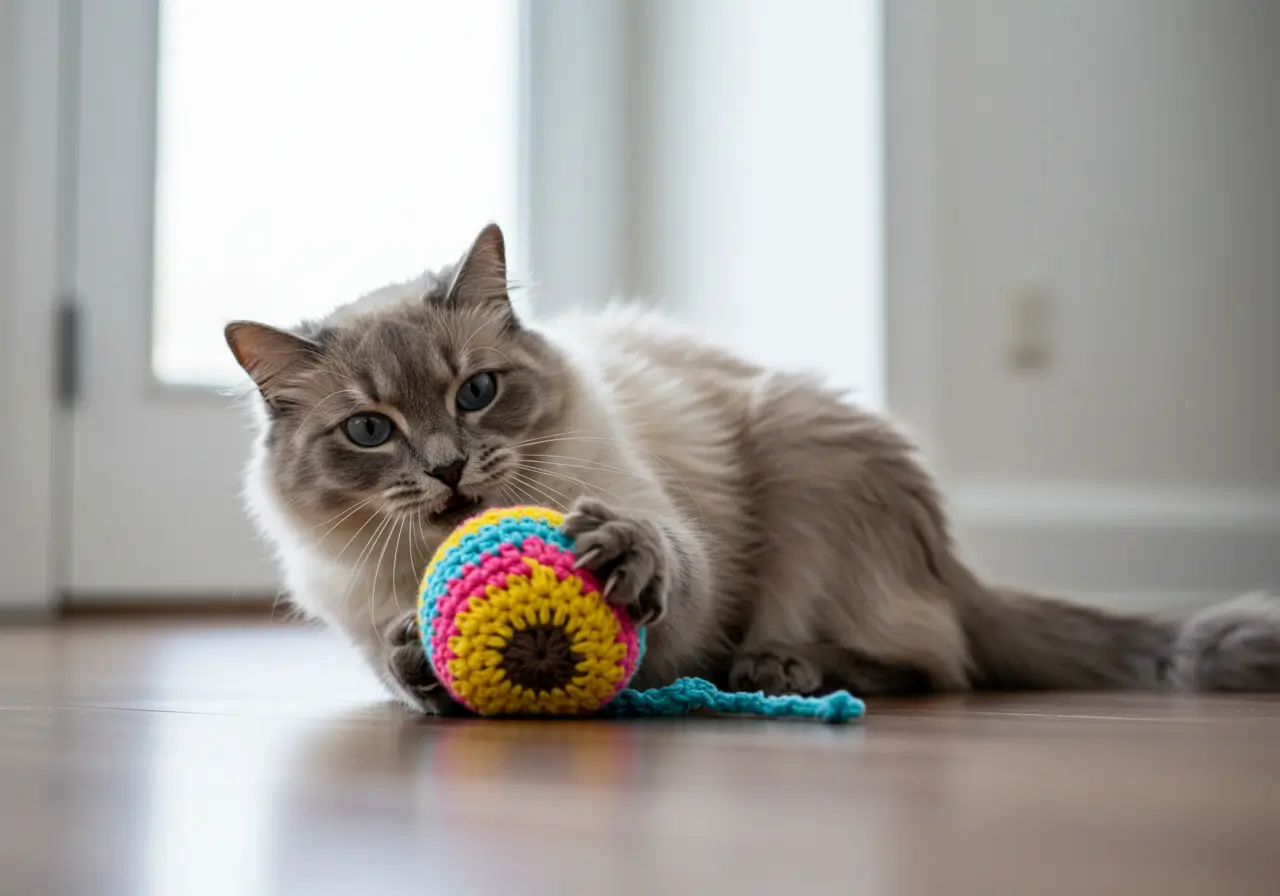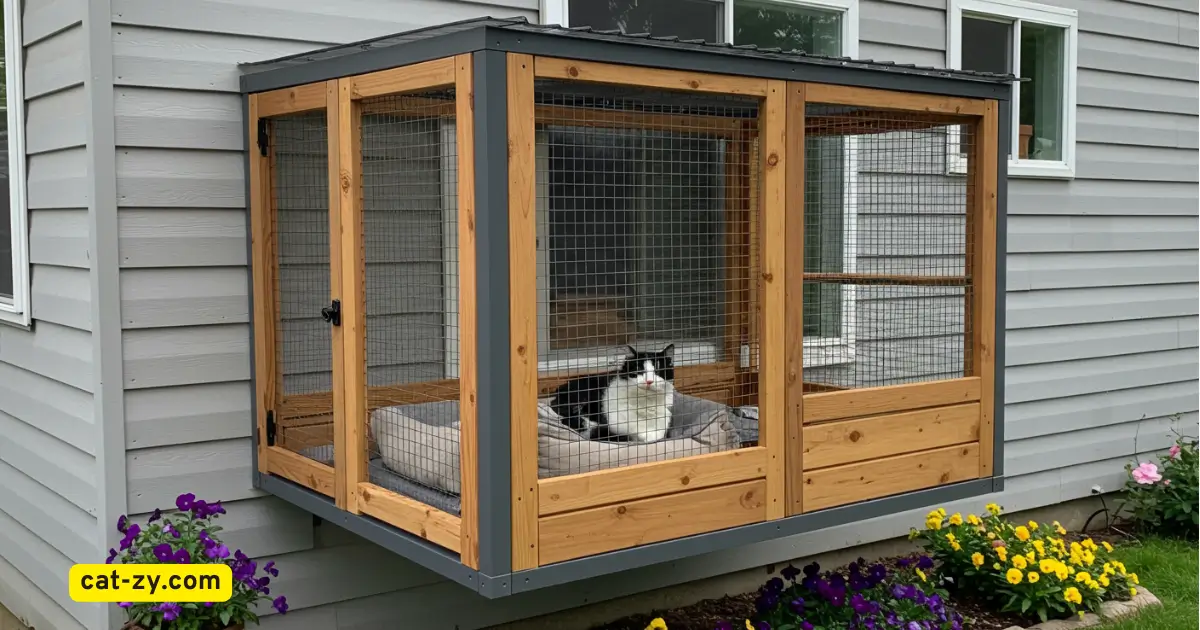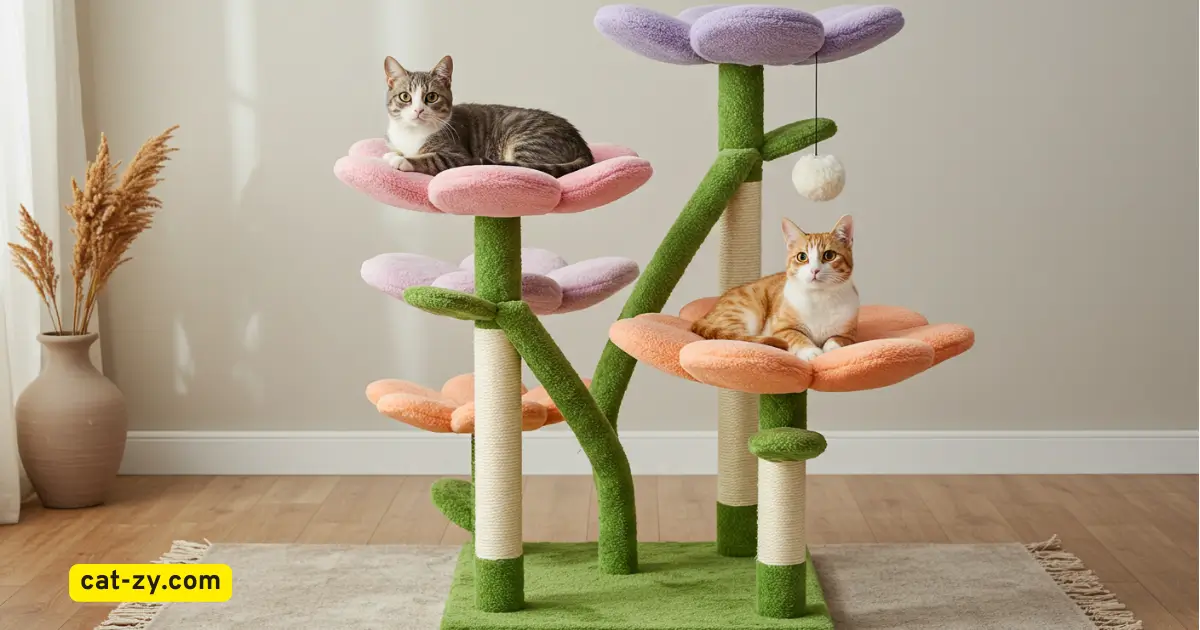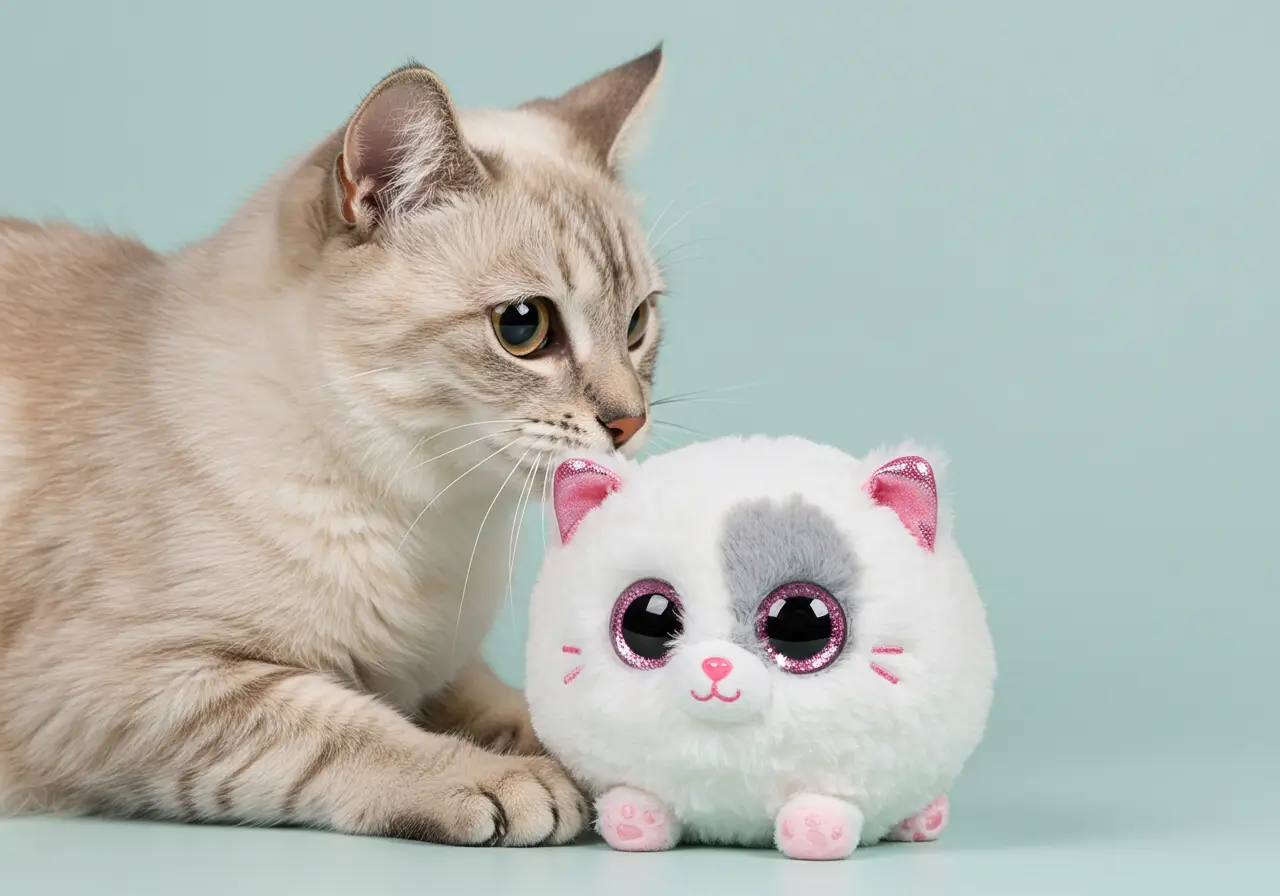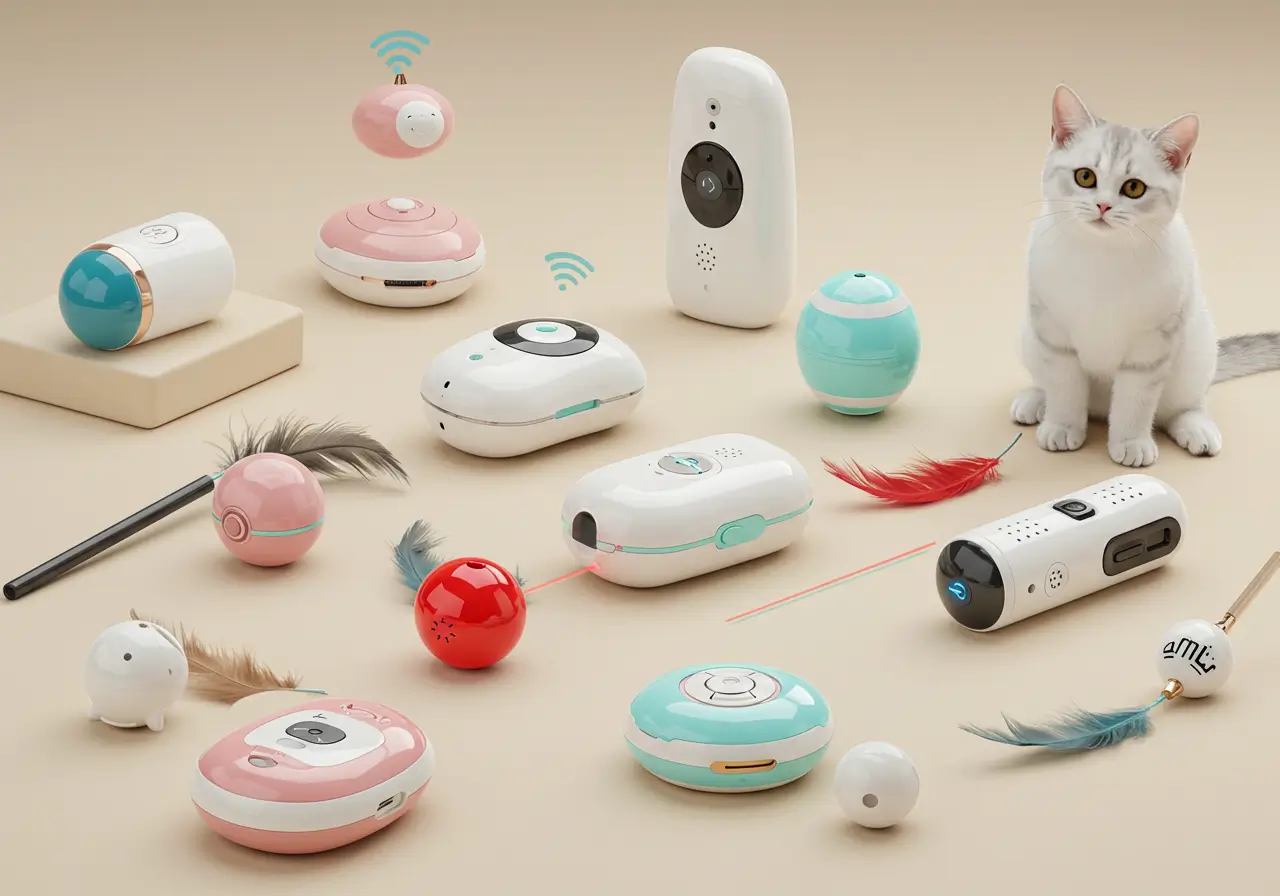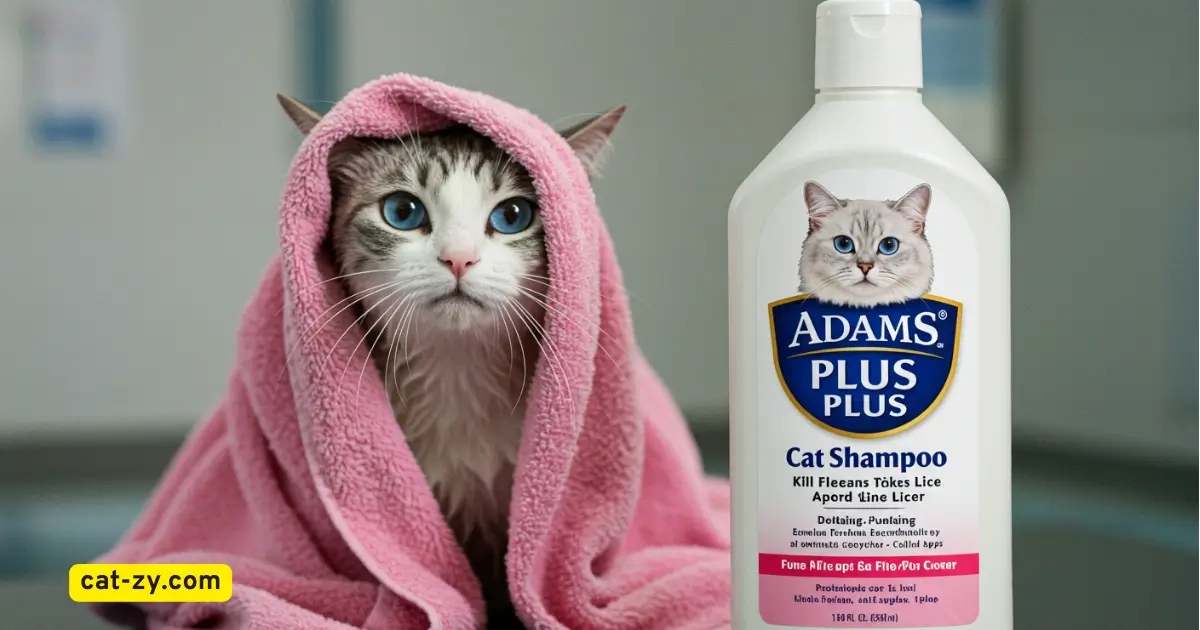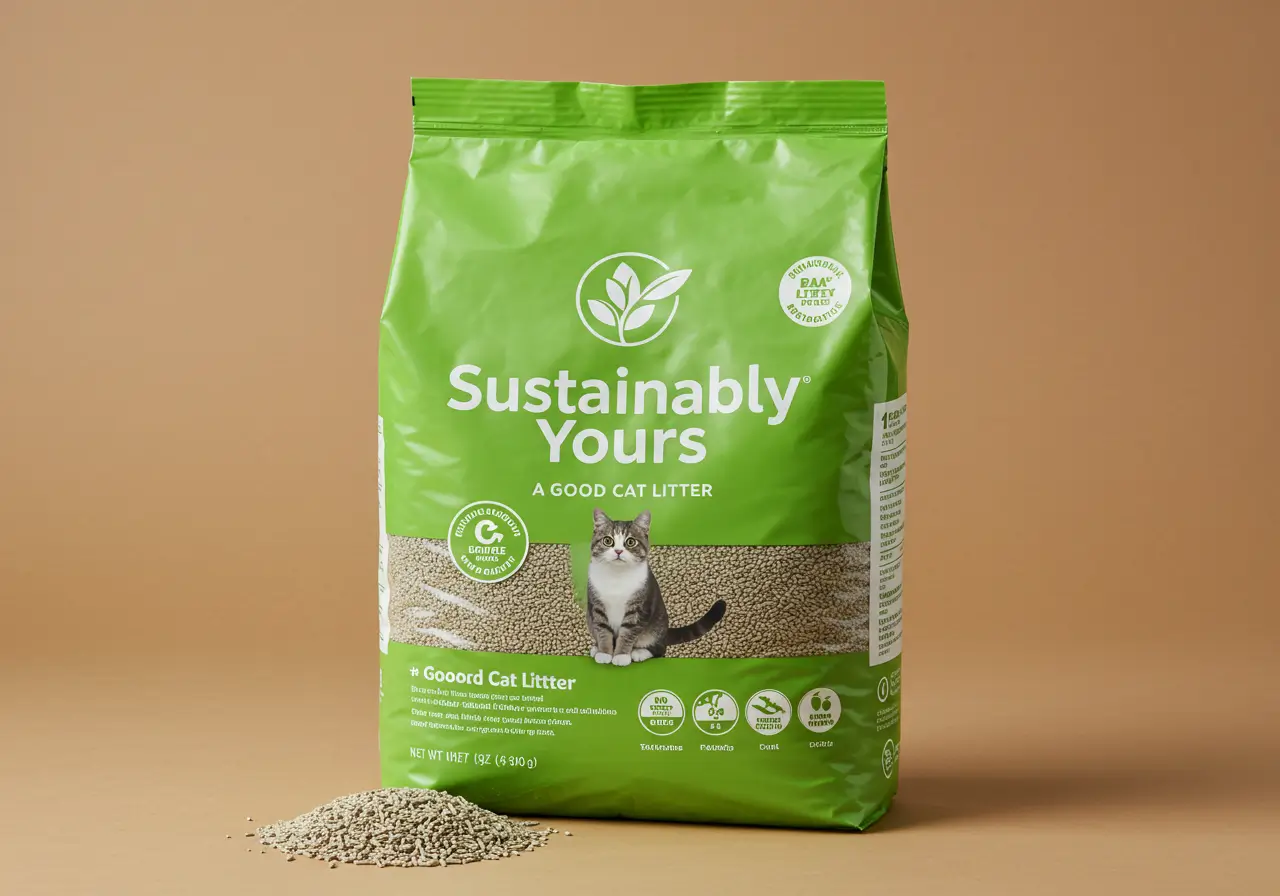7 Essential Things That Make Crochet Cat Toys Safe and Fun for Your Feline
Did you know that the average indoor cat needs 30-60 minutes of active play each day, yet 73% of cat owners report spending less than 15 minutes daily engaged in interactive play with their feline friends? This play deficit can lead to boredom, obesity, and behavioral issues. Crochet cat toys have surged in popularity, with Etsy reporting a 127% increase in searches for these items over the past year alone. But the pressing question remains: are crochet cat toys safe for cats, and how can you ensure your handmade creations provide both entertainment and security?
As cat owners increasingly seek sustainable, personalized alternatives to mass-produced plastic toys, crochet cat toys offer a creative solution that can be tailored to your pet’s specific play preferences. However, not all yarn crafts are created equal when it comes to feline safety.
Table of Contents
Understanding Crochet Cat Toys
Crochet cat toys represent the perfect intersection of pet care and crafting. These handmade toys leverage the tight, woven structure created by crochet techniques to produce durable objects that can withstand the rigors of feline play. Unlike knitting, which creates a more flexible fabric with open loops, crochet typically results in a denser, sturdier construction that, when done properly, can be more resistant to unraveling – a critical safety factor for cat toys.
The appeal of these toys extends beyond their crafty origins. According to a survey by the Craft Yarn Council, 68% of cat owners who create crochet cat toys report that their pets show a clear preference for these handmade items over store-bought alternativesThe appeal of these crochet cat toys extends beyond their crafty origins. According to a survey by the Craft Yarn Council, 68% of cat owners who create crochet cat toys report that their pets show a clear preference for these handmade items over store-bought alternatives. This preference likely stems from several factors:
- The natural fibers often used in crocheting may carry scents that appeal to cats
- The varied textures created through different crochet stitches stimulate a cat’s tactile senses
- The ability to customize toys with catnip pouches or crinkly inserts enhances play value
- The unique movement patterns of lightweight, crochet cat toys mimic prey behaviors that trigger hunting instincts
While these benefits make crochet cat toys attractive options, understanding proper construction techniques and material choices is essential for ensuring your feline friend’s safety during playtime.
Key Insights: Safety Considerations
Yarn Selection
The foundation of a safe crochet cat toy begins with appropriate yarn selection. Not all yarns are created equal when it comes to pet safety, and some popular crafting fibers can pose significant hazards to cats.
According to Dr. Lisa Radosta, board-certified veterinary behaviorist, “Cotton and acrylic yarns tend to be the safest options for cat toys because they’re less likely to cause intestinal blockages if small bits are ingested. Avoid yarns with metallic threads, fuzzy ‘eyelash’ textures, or loose fibers that can shed easily.”
Research from the Journal of Veterinary Emergency and Critical Care indicates that string foreign bodies, including yarn, represent one of the most dangerous types of ingestion for cats. These materials can cause what veterinarians call a “linear foreign body obstruction,” potentially sawing through intestinal tissue and requiring emergency surgery.
Recommended yarn types for crochet cat toys include:
- 100% cotton yarn (mercerized for extra strength)
- Cotton-acrylic blends with tight twist construction
- Specialized “amigurumi” yarns designed for toy-making
Yarns to avoid completely:
- Mohair, angora, or other shedding animal fibers
- Chenille or velvet yarns that can be easily shredded
- Any yarn with glitter, metallic threads, or decorative elements
- Wool yarns that may cause allergic reactions in some cats
Construction Techniques
The way a crochet cat toy is constructed significantly impacts its safety profile. A 2022 survey of emergency veterinarians found that 87% of yarn-related feline intestinal obstructions involved toys that had begun to unravel or were made with loose stitches.
Tight Stitches
Creating amigurumi-style toys with tight, small stitches using a hook smaller than typically recommended for your yarn weight creates a denser fabric that resists tearing and unraveling. This technique is particularly important for crochet cat toys, as the tight construction helps prevent cats from working their claws or teeth between stitches.
Secure Stuffing
What’s inside your crochet cat toy matters just as much as the outer shell. Polyester fiberfill is commonly used but can pose a hazard if the toy tears open. Safer alternatives include:
- Catnip or silver vine (enclosed in a secure inner pouch)
- Crinkle material designed for pet toys
- Cat-safe stuffing alternatives like compressed cotton
Some crafters opt for completely unstuffed toys or designs that incorporate sturdy, food-grade squeakers or bells securely encased within multiple layers of crochet.
Size and Design Safety
The dimensions and design elements of crochet cat toys require careful consideration. According to data from the Animal Poison Control Center, toys smaller than 1.5 inches in diameter present choking hazards, while appendages (like tails or legs on amigurumi animals) should be either omitted or crocheted solidly with the body rather than attached separately.
Dr. Jennifer Coates, veterinary advisor for PetMD, explains: “Cats are attracted to small objects and parts that mimic prey. While this makes toys with dangling elements enticing, these same features can become dangerous if they detach during play. Opt for one-piece designs whenever possible.”
Expert Advice
Veterinary behaviorist Dr. Nicholas Dodman, professor emeritus at Tufts University’s Cummings School of Veterinary Medicine, emphasizes the importance of supervision: “No toy is 100% safe for every cat. Even the most carefully crafted crochet toy should only be offered during supervised play sessions and stored securely when you’re not present to monitor your cat’s interaction.”
Dr. Stephanie Borns-Weil, head of the behavior service at Tufts, adds context about play behavior: “Cats engage with toys in ways that mimic their predatory sequence: stalking, pouncing, grabbing, and biting. A well-designed crochet toy can satisfy these natural behaviors while minimizing risks. Look for toys that encourage exercise through chasing and batting rather than aggressive chewing.”
Research from Ohio State University’s Indoor Cat Initiative indicates that the average cat prefers to cycle through at least 9-12 different toys to prevent boredom. Rather than creating numerous different crochet toys, consider rotating a smaller collection and “refreshing” them periodically with catnip spray or by washing them to remove your cat’s scent marking.
Feline nutrition specialist Dr. Lisa Pierson notes: “Interactive play with appropriate toys, including well-made crochet options, burns approximately 15-20 calories per 15-minute session – a significant contribution to weight management for indoor cats, considering they only need about 200-250 calories daily depending on size and activity level.”
Common Mistakes to Avoid
Using Inappropriate Embellishments
A survey of emergency veterinary clinics found that 43% of toy-related surgeries in cats involved the removal of small decorative elements like plastic eyes, bells, or buttons. These components can detach during play and pose serious ingestion hazards, especially in crochet cat toys.
Instead of using potentially dangerous plastic or metal embellishments, consider these safer alternatives:
- Embroider facial features using the same yarn as the toy body
- Create texture variation through stitch pattern changes rather than add-ons
- If sound elements are desired, use specially designed cat toy squeakers fully enclosed within multiple layers of crochet
Neglecting Regular Toy Inspection
According to the American Veterinary Medical Association, 27% of pet owners don’t routinely check toys for signs of damage – a practice particularly important with crochet items. Establishing a weekly toy inspection routine can help identify potential hazards before they lead to emergency situations.
Signs that a crochet toy should be repaired or retired include:
- Loose or unraveling stitches
- Exposed stuffing or internal components
- Stretched openings that could allow access to filling
- Significant discoloration or odor (indicating bacterial growth)
Creating Toys with Long Strings or Tassels
Data from a five-year retrospective study at the Cornell University College of Veterinary Medicine revealed that toys with attached strings or cord-like appendages accounted for 78% of linear foreign body obstructions in cats under three years old.
While cats are naturally attracted to string-like objects, these elements represent one of the most dangerous components in any toy. Avoid designs featuring tassels, long tails, or attached strings, regardless of how securely they appear to be fastened.
Assuming All Crochet Techniques Are Equally Safe
The specific crochet technique used can significantly impact toy safety. A dense, single crochet amigurumi-style construction creates fewer gaps than more open stitches like double or treble crochet. According to crafting safety experts, toys made with the magic ring technique should have the center ring reinforced with additional stitching to prevent center holes from forming as the ring loosens over time.
Recommended Products and Solutions
Best Yarns for Crochet Cat Toys
- Lion Brand 24/7 Cotton: This mercerized cotton yarn offers exceptional durability and comes in vibrant colors that appeal to both crafters and cats. Its tight twist construction resists shredding, making it ideal for interactive toys.
- Hobby Lobby I Love This Cotton: With a softer feel than some cotton yarns but excellent stitch definition, this yarn works well for toys that will receive gentler play. The wide color range allows for creative variety in your cat toy collection.
- Red Heart Super Saver: This budget-friendly acrylic option provides good durability for cat toys. Its slightly stiffer texture creates toys that hold their shape well during active play sessions.
Essential Tools for Safe Toy Creation
- Clover Amour Ergonomic Crochet Hooks: The smaller hook sizes (2.25mm-3.5mm) are perfect for creating tight, dense fabric regardless of yarn weight.
- Susan Bates Yarn Needles: These blunt-tip needles make it easier to weave in ends securely, reducing the risk of unraveling.
- KnitPicks Stitch Markers: Helpful for tracking safety checkpoints in your pattern, such as ensuring consistent stitch counts that create even, gap-free fabric.
Pre-Made Safety-Tested Options
For those who prefer purchasing rather than crafting:
- Pawsome Crochet Collectibles: This Etsy shop specializes in handmade cat toys using safety-tested techniques and materials, with all products subjected to rigorous play testing before listing.
- Tickle Pickle Crafts: Known for their innovative “dual-shell” construction that adds an extra layer of protection against stuffing exposure, these toys combine playful designs with thoughtful safety features.
Conclusion
Crochet cat toys can provide safe, engaging enrichment for your feline companion when created with appropriate materials and techniques. By following the safety tips outlined here, you can ensure your crochet cat toys are both fun and secure. By selecting pet-safe yarns, employing tight stitching methods, avoiding dangerous embellishments, and maintaining regular toy inspection routines, you can craft toys that stimulate natural play behaviors while minimizing risks. Remember that supervision remains the most important safety feature of any toy interaction.
Have you created crochet toys for your cats? Share your experiences, favorite patterns, or safety questions in the comments below. For more feline enrichment ideas and craft tutorials, subscribe to our newsletter for weekly updates delivered directly to your inbox.
FAQs
Can I use yarn scraps from my stash to make cat toys?
While using stash yarn is economical, not all yarns are suitable for pet toys. Evaluate each yarn based on fiber content and construction rather than convenience. Cotton and cotton-blend scraps are generally acceptable, but avoid wool, mohair, and novelty yarns with loose fibers or decorative elements. Always prioritize your cat’s safety over stash-busting opportunities.
How often should I replace handmade crochet toys?
Inspect toys weekly for signs of wear and replace them when you notice fraying, loose stitches, or exposed stuffing. Even well-made toys typically need replacement every 2-3 months with regular play. Rather than discarding worn toys immediately, consider moving them to supervised-only play status before retiring them completely.
Is it safe to add catnip to crochet toys?
Yes, but with precautions. Create a separate, tightly crocheted inner pouch for the catnip, then enclose this within the main toy. This double-barrier approach prevents direct catnip ingestion while still allowing the aromatic compounds to permeate the toy. Replace catnip every 2-3 weeks to maintain potency, as the essential oils that attract cats naturally dissipate over time.
What’s the best way to clean crochet cat toys?
For cotton or acrylic toys without catnip or other fillings, machine washing in hot water with pet-safe detergent is effective. Place toys in a mesh laundry bag and use the gentle cycle. Allow toys to thoroughly air dry before returning them to your cat. For toys containing catnip or specialized fillings, spot cleaning with a damp cloth and pet-safe cleaning solution is recommended.
My cat ignores the crochet toys I make. What can I do?
Approximately 30% of cats show strong preferences for specific toy types based on individual play style. Observe whether your cat prefers chasing, batting, bunny-kicking, or pouncing behaviors, then adapt your crochet designs accordingly. Adding movement elements that trigger predatory responses – like attaching toys to wand handles (while supervised) – can increase engagement. Some cats also respond better to toys refreshed with catnip, silver vine, or valerian root.
Are commercially available crochet patterns safe for cat toys?
Not automatically. Review any pattern carefully before using it for pet toys. Look for designs that specify use for pets, avoid separate small attachments, and recommend appropriate yarn types. Be willing to modify patterns by eliminating potentially hazardous elements like button eyes or long appendages, even if these modifications affect the aesthetic appeal of the finished toy.

